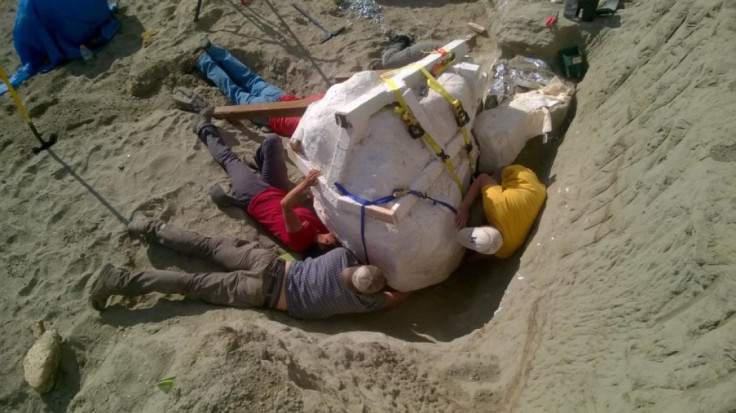Major new T Rex fossil discovered
The rare discovery is estimated to be just 15% smaller than the largest T Rex ever found.

A significant new Tyrannosaurus rex fossil has been unearthed by palaeontologists from the Burke Museum of Natural History and Culture and the University of Washington (UW). The find includes a nearly complete skull.
Despite the fact it is one of the most iconic and well-known dinosaurs, T Rex fossils are rare. The latest specimen is one of only 25 in the world at a similar level of completeness – the palaeontologists estimate they have uncovered about 20% of the animal. The skull, however, will be of most interest to researchers, given that there are currently only 15 reasonably complete T Rex skulls in the world. Palaeontologists will conduct further searches next summer, in an attempt to find more of the specimen.
The team, led by professor of biology at UW and curator of vertebrate palaeontology at Burke, Gregory P Wilson, discovered the fossil during an expedition to the Hell Creek Formation in northern Montana, USA – an area that's renowned the world over for its dinosaur fossil sites. During one of the searches, a piece of fossilized bone protruding from a rocky hillside piqued the interest of two Burke volunteers, Jason Love and Luke Tufts. Upon further inspection, the team came across a skull, as well as ribs, vertebrae and parts of the jaw and pelvis.
T Rex was one of the largest and most fearsome dinosaurs to ever to roam the earth. On average, it measured 12 metres in length, and stood 4 and a half to 6 metres tall. Its size, combined with its sharp serrated teeth, made it a dangerous and effective predator. Evidence taken from the fossilised faeces of T Rex suggest it even ate fairly large dinosaurs like Edmontosaurus and Triceratops. It lived between about 66-68 million years ago in forested river valleys across western North America during the late Cretaceous Period – 145-66 million years ago.

In honour of the two volunteers who spotted it, the specimen has been nicknamed the "Tufts-Love Rex". Its skull measures about 1.2 metres long and weighs roughly 1100kg – although the team have covered it in a protective plaster casing in order to protect it during transport, meaning it will weigh more. Based on the size of its skull, the Burke palaeontologists estimate that the specimen is about 85% the size of the largest T Rex found to date and have suggested that it was about 15 years old when it died. T Rex usually lived up to about 25-30 years old.
"We think the Tufts-Love Rex is going to be an iconic specimen for the Burke Museum and the state of Washington and will be a must-see for dinosaur researchers as well," said Wilson.
The fossil is around 66.3 million years old, determined by the fact that it was found in a rock layer that marks the Cretaceous-Paleogene mass extinction event. The event, thought to have been caused by a massive comet or asteroid impact, occurred 66 million years ago wiping out three quarters of all life on earth.
The expedition which found the fossils was part of the Hell Creek Project, a multidisciplinary, multi-institutional project designed to find out more about the mass extinction event, which killed of the dinosaurs, as well as the two million years or so which preceded, and succeeded it. It is currently led by Nathan Myhrvold and Jack Horner.
"This is really great news. The Hell Creek Project is responsible for finding the most T Rex specimens in the world, with 11 to date," said Myhrvold, a leader of the project. "The T Rex has always been my favourite dinosaur and I'm really pleased that this one is going to make its home at the Burke Museum."
"Having seen the 'Tufts-Love Rex' during its excavation I can attest to the fact that it is definitely one of the most significant specimens yet found, and because of its size, is sure to yield important information about the growth and possible eating habits of these magnificent animals," said Horner.
© Copyright IBTimes 2025. All rights reserved.





















